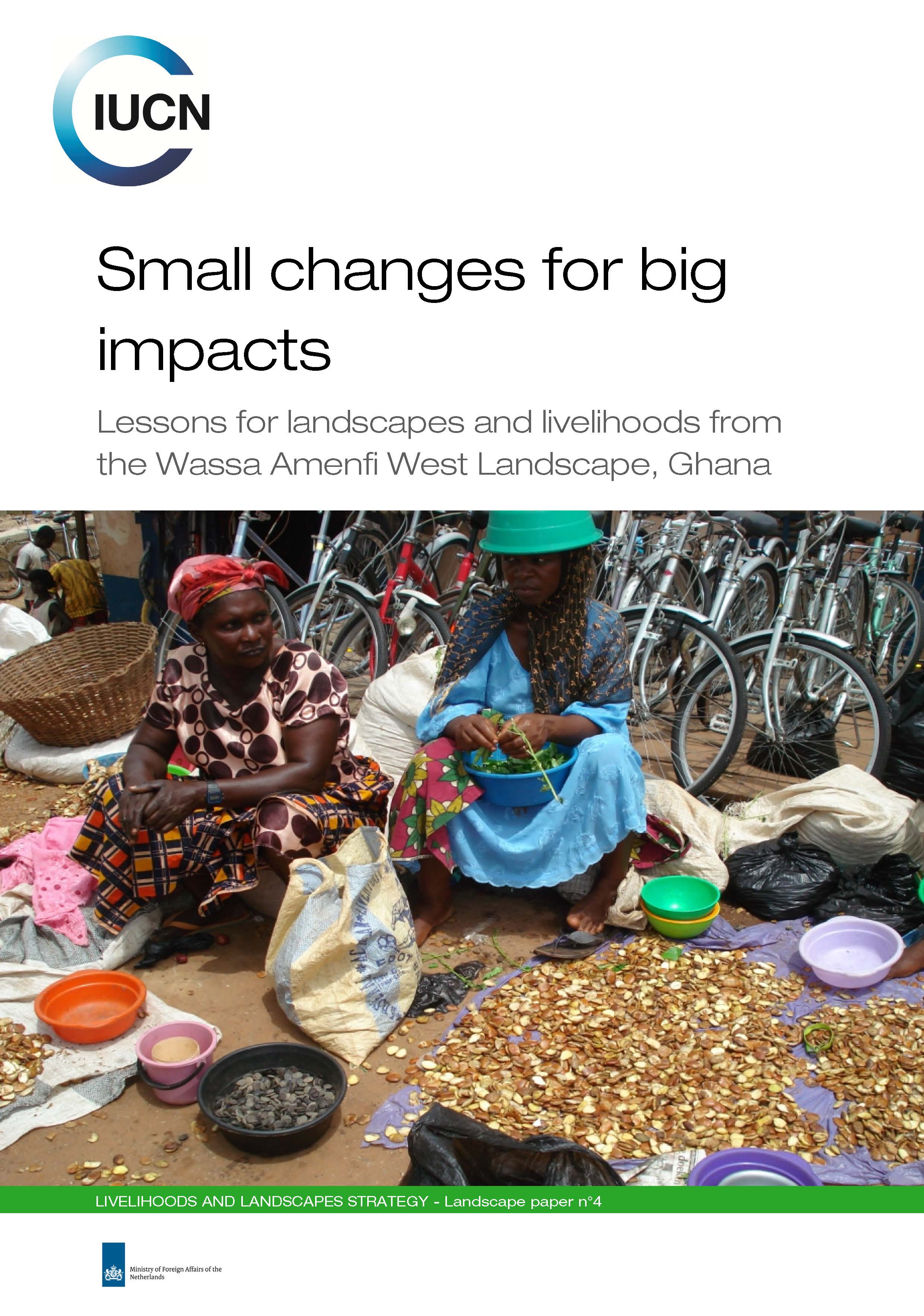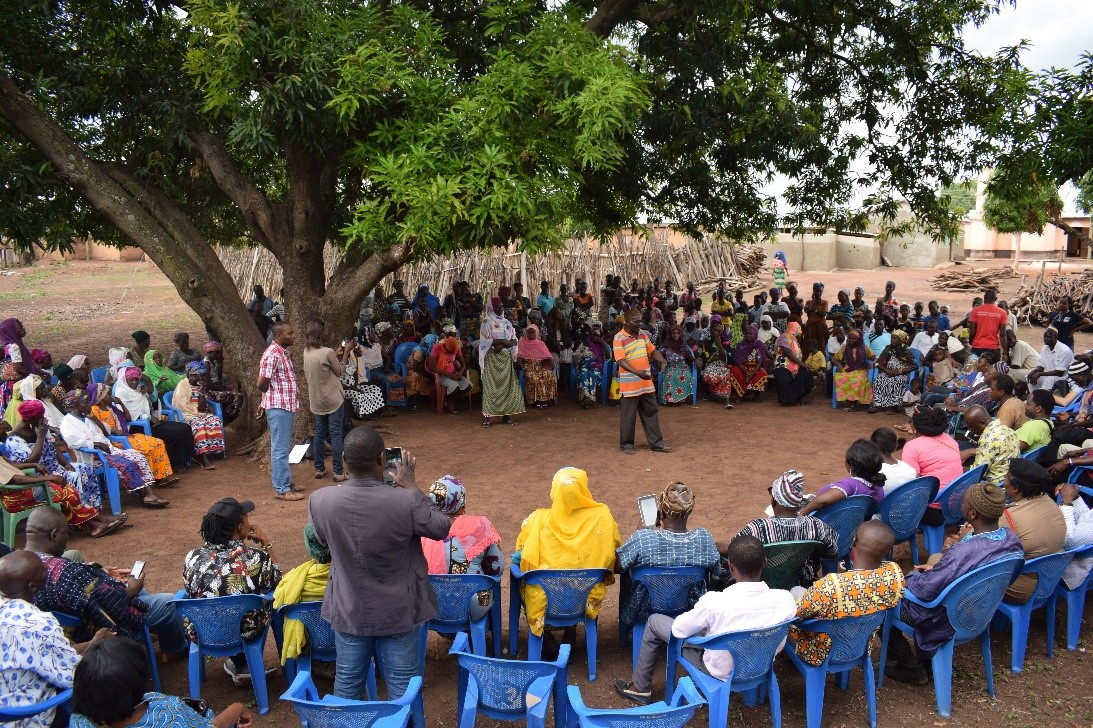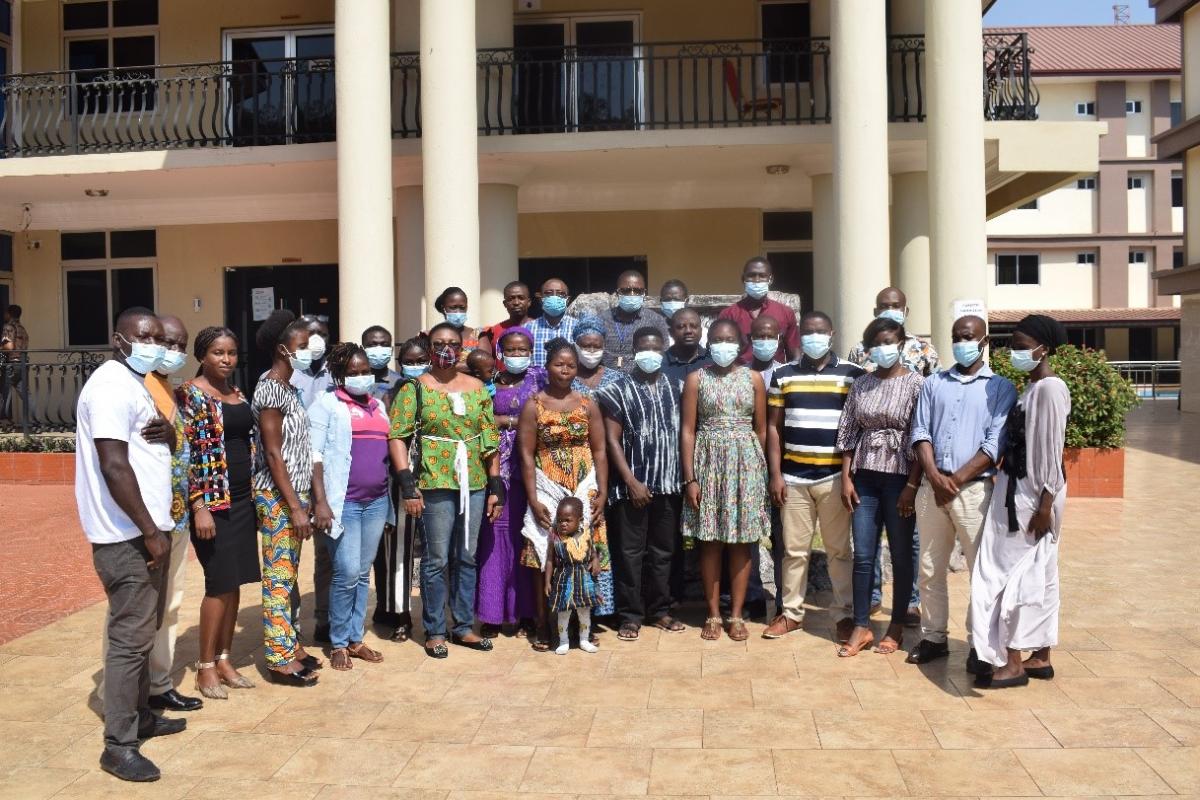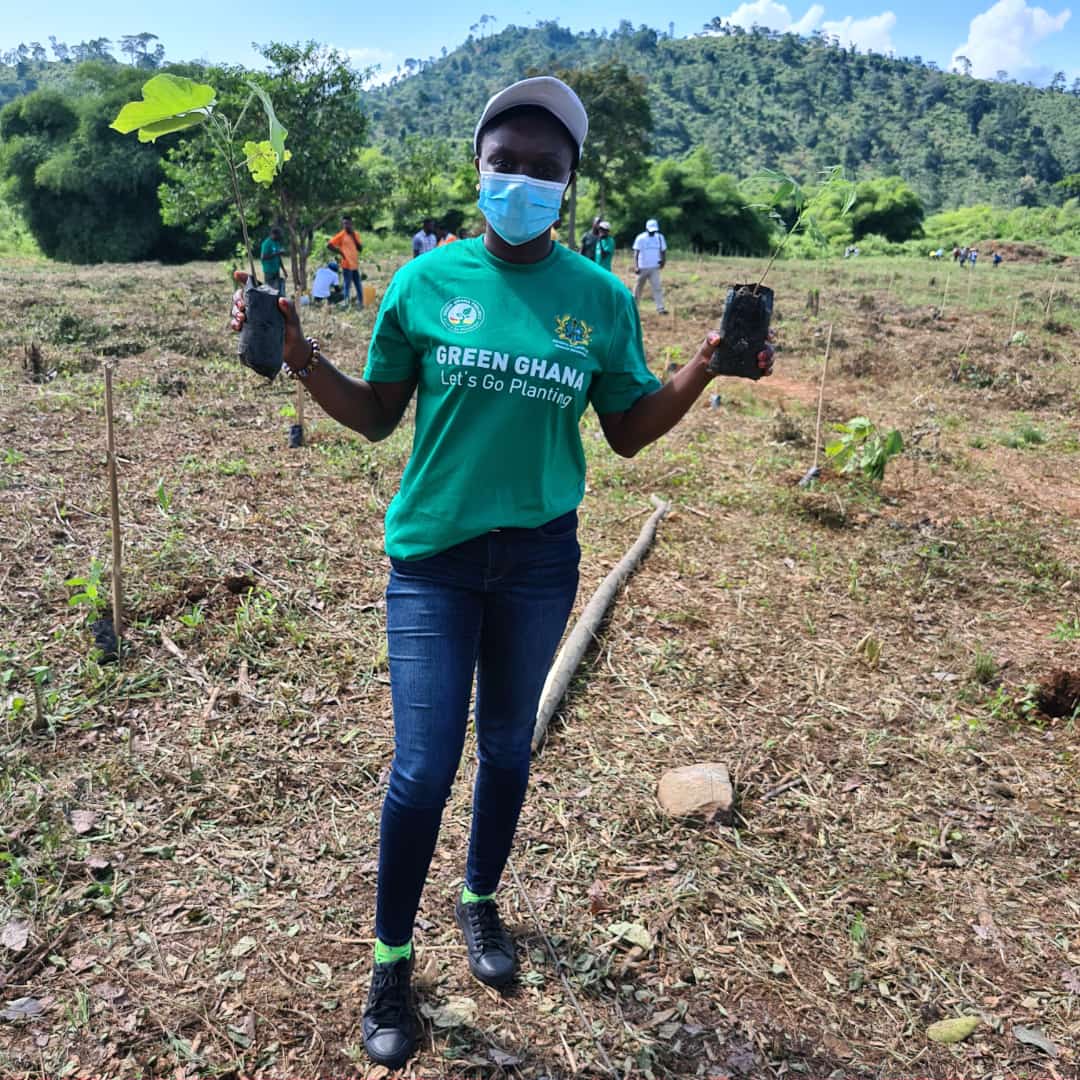Small changes for big impacts - Wassa Amenfi West, Ghana
This paper describes LLS interventions in the Wassa Amenfi West Landscape in the western region of Ghana. The landscape extends over an area of about 120,000 ha. It is a mixed landscape with a variety of agricultural uses; the most important is cocoa farming.

Photo: IUCN
At the start of the LLS intervention, parts of the landscape, particularly forested areas were quite degraded, while levels of poverty among the communities that rely on natural resource exploitation were quite high. This situation was further complicated by poorly-defined and publicized land tenure arrangements, which provided disincentives for the local population to undertake action to protect and restore trees, especially cocoa bushes.
LLS interventions sought to tackle the twin challenges of poverty and landscape degradation through a series of very simple interventions, which also served to debunk the myth that landscape restoration and poverty reduction require elaborate and complicated strategies. Through multi-stakeholder engagement,including with local communities and government agencies at the local and regional level, interventions focussed on raising awareness among all stakeholders of the issues and the simple actions that could be implemented to tackle them.
Perhaps of key interest, a crucial intervention that yielded important benefits in terms of incentivizing local communities to intervene to protect their natural resources consisted of ‘tweaking’ land tenure arrangements. Land tenure arrangements in the landscape are largely based on customary law and not necessarily formalized in law, except in the case of government-owned lands (e.g. forests.
Much of the non-government owned land is privately owned, but leased to tenants. Naturally-occurring trees are owned by the government. But trees, including cocoa bushes, planted by tenants on leased lands or bylandowners when they manage their own lands, are the property of the tenants/landowners, rather than the government. However, many tenants were unaware of this complex arrangement. As a result, they had few incentives to enhance the quality of their crops.To overcome this, rather than seeking to instigate formal tenure systems that recognized this, the intervention focused on raising awareness of this.
It also introduced a system of tree registration whereby a certificate is issued to the tree planters recognizing their access and rights to the trees and that the benefits from the tree accrue to them. This very simple mechanism of tree certificates has provided incentives to farmers to take efforts to protect and restore their crops as they now have guarantees that the benefits will accrue to them. Over the long term it will also contribute towards enhancing their livelihoods. This and other interventions in the landscape demonstrate the potential of small actions for large impacts both in the landscape and on livelihoods.



